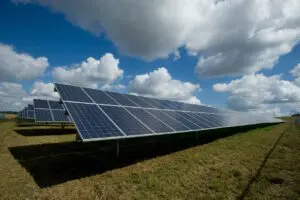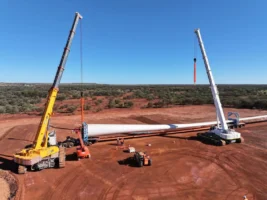The plans of Australian nano-technology start-up Gelion to commercialise its potentially revolutionary battery storage technology has been boosted by an $11 million investment by UK renewables group Armstrong Energy.
Gelion – a spin-off company from the University of Sydney – said on Wednesday that it had exchanged contracts with Armstrong Energy, a leading London-headquartered company which focuses solar energy at a utility-scale.
Gelion’s battery technology, which was featured recently on ABC TV’s Catalyst, differs from zinc-bromine flow batteries – such as those made by Australian company Redflow – in that it uses a gel, instead of a liquid.
 The nano-structured gel is the brainchild of renewable energy and catalysis expert Professor Thomas Maschmeyer, who is also the director of the Australian Institute for Nanoscale Science and Technology, which launches this month at the University of Sydney on 20 April.
The nano-structured gel is the brainchild of renewable energy and catalysis expert Professor Thomas Maschmeyer, who is also the director of the Australian Institute for Nanoscale Science and Technology, which launches this month at the University of Sydney on 20 April.
It not only allows the batteries to be used in much smaller appliances, including cars, computers and mobile phones, but is also aimed at significantly out-competing current lithium-ion technology in terms of charging/discharging speeds, safety, durability and price.
According to Gelion, it has got the charge time for the battery down to just a few minutes, while its efficiency is at 90 per cent, which is higher than in your mobile phone. It also has a longer lifetime and is cheaper than lithium, and the gel is made out of a fire-retardant material.

But the initial target market for Gelion’s batteries is for storage in buildings – both residential and commercial.
As Catalyst explains, being gel-based, the batteries are “bendy” – a feature that has caught the attention of the building industry – including big name players like Lend Lease, who are picturing a future where flat-pack zinc-bromine batteries could be included in the very fabric of buildings.
“We’re thinking about things like working with Professor Maschmeyer to use prefabricated wall segments, for example, as, effectively, battery storage or power storage facilities,” said Lend Lease CEO Steven McCann.
“So imagine that in a large scale and the impact that will have on the emissions from the built space, which is a very significant impact on the environment.”
Professor Maschmeyer explains further: “The idea is to build houses with batteries inherently included as part of their structure, ready to take advantage of rapidly improving, solar energy technology and also to serve as a buffer for the grid, enabling an ever greater share of renewables to be connected, while grid stability is maintained.”
And while that might be a way off yet, the investment from Armstrong Energy means a full commercial demonstration prototype could be developed within four years.
“The investment fits very well into our existing portfolio that specialises in the development, acquisition and operation of power projects that provide a stable yield for our investors from the sale of electricity or heat,” said Armstrong Energy director Steve Mahon.
“We have invested more than £250 million into energy infrastructure, delivering excellent risk-adjusted returns to investors – we expect the Gelion investment to join that success.”
University of Sydney Vice-Chancellor Dr Michael Spence said Gelion Technologies was a success story for the University of Sydney and for public investment in science and technology.
“Here we have an outstanding example where quality academic achievements meet with a desire to make an impact – and translate the deep, fundamental insights gained in the laboratory to commercial application,” Dr Spence said.










